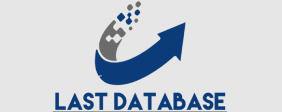Email headers are often overlooked, but they can have a big impact on how your emails are received. In fact, the right emotional tone in your email headers can increase your open rates by as much as 30%. So how do you use emotion to your advantage in your email headers? Here are a few tips: use positive language. Words like “excited,” “happy,” and “free” can create a positive emotional response in your recipients. Use strong verbs. Verbs like “save,” “earn,” and “discover” can evoke a sense of action and excitement. Use personal pronouns. Pronouns like “you” and “your” can make your emails feel more personal and engaging. Use humor. A well-placed joke or pun can help to break the ice and make your emails more memorable.
Of course you don’t want to overdo it
If your email headers are too emotional, they can come across as spammy or manipulative. But if you use emotion in a subtle and effective way, you can increase your chances of getting your emails opened and read. Here Image Masking Service are a few examples of email headers that use emotion effectively: “your free trial is about to expire!” this header uses a sense of urgency to encourage the recipient to take action. “you’ve won!” this header uses surprise and excitement to grab the recipient’s attention. “we’re sorry, but…” this header uses empathy to create a sense of connection with the recipient. As you can see, there are many different ways to use emotion in your email headers.
The key is to find a tone that is appropriate for
Your audience and your message. By using emotion effectively, you can increase your open rates and improve your chances of getting your emails read. Here are some additional tips for using emotion in email headers: use the right words. The words you choose in your email headers will have a big BR Lists impact on the emotional tone of your message. Choose words that are positive, strong, and personal. Be specific. Don’t just say “exciting” or “interesting.” be specific about what makes your email so exciting or interesting. This will help to pique the recipient’s curiosity. Be brief. Email headers are short, so you need to get your point across quickly. Use clear and concise language that will grab the recipient’s attention.







